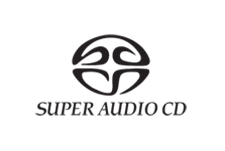

SACD was Sony and Philips's unsuccessful foray into the world of high-resolution audio. It competed directly with the also now mostly-dead DVD-Audio format in the late 1990s. SACD uses a one-bit, high-resolution DSD system that, when used throughout the entire recording process, can produce a stunning audio sound with many times more resolution and much more realistic sound than a compact disc. Most SACD discs were produced on PCM recording consoles, which some said caused their quality to suffer. Also, most SACDs were recorded in stereo rather than in 5.1 surround.
The DSD format works with only a single bit of depth by having a sampling rate of 2.8224 MHz, versus the normal 44.1 kHz (and 16-bits) for CD. By using only a single bit and a high sample rate, the theory was that the audio could be more "analog" and lifelike. As opposed to the industry standard PCM (pulse-code modulation) found on CDs, DSD is PDM (pulse-density modulation).
Ed Meitner, founder of EMM Labs, was a major pioneer in DSD.
Why SACD Failed
1. Record labels couldn't agree on an HD format, either SACD or DVD-Audio.
2. SACD required a consumer to buy a new player, potentially a new preamp (for surround) and upwards of six audio cables.
3. Record labels didn't release A-list titles on SACD, thinking that consumers needed to buy millions of players when potential customers were really saying, "Show us the music and we might buy."
4. SACD had no presence in car audio.
These days, universal players (usually Blu-ray) and the PS3, along with some high-end dedicated players, are all that playback the format.
In case you are wondering what the best SACDs of all time were, Audiophile Review has the list.